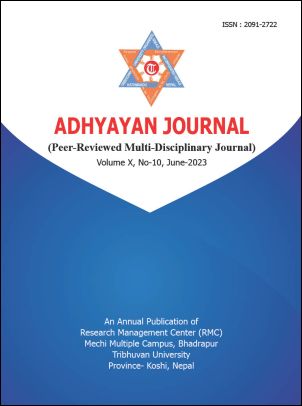Unmet Contraceptive Need among Currently Married Adolescents in Nepal
DOI:
https://doi.org/10.3126/aj.v10i10.57349Keywords:
Family planning, unmet need, met need, contraceptives intentions, NDHSAbstract
Nepal has a remarkably high adolescent fertility rate with low use of contraception. A high level of unmet need for contraception persists among currently married young women in Nepal. Evidence about the unmet need for family planning and its associated factors has not been deeply analyzed in the Nepalese context yet. Therefore, this study investigates the prevalence and determinants of unmet need for family planning among currently married adolescent women in Nepal. It is an analytical cross-sectional study through secondary data analysis of the 2016 Nepal Demographic and Health Survey women data-file. This study is carried out on 704 currently married women aged 15-19 years. Selected independent variables are cross-tabulated with the dependent variable to analyze where the Chi-square test is applied to test the significance of the association between these two variables. This study shows that the total unmet need for family planning among adolescent women is 34 percent is much higher than the current national unmet need for family planning is 23 percent among all women of reproductive age by the NDHS 2016. The study reveals that several adolescents have a higher unmet need for family planning by different background characteristics in Nepal. Hence, it is necessary to focus on strengthening women's status by improving their socio-economic condition. That enables them to discuss sexual issues openly. Family planning programs need to design to address the unmet need of young women, especially needy adolescents.




